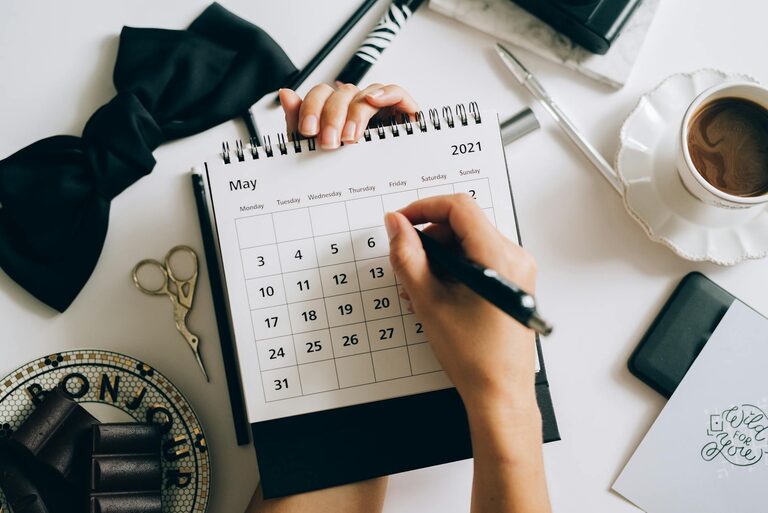Creating a weekly reset routine can be a game-changer for your productivity, mindset, and overall well-being. Just like your devices need a reboot to function smoothly, your mind and body benefit greatly from a dedicated time to pause, reflect, and prepare for a new week. This post will guide you through designing a personalized weekly reset routine that fits your lifestyle and helps you start each week feeling refreshed and focused.
Why Have a Weekly Reset Routine?
Before diving into how to create one, it’s helpful to understand why a weekly reset is beneficial:
– Reduces Stress: Taking time to organize and reflect reduces anxiety and prevents overwhelm.
– Boosts Productivity: Planning tasks ahead improves time management and focus.
– Enhances Well-being: Incorporating self-care promotes mental and physical health.
– Builds Consistency: Regular routines help develop positive habits over time.
By setting aside even 30 minutes to an hour once a week, you can establish a sustainable practice that benefits multiple areas of your life.
Step 1: Choose Your Reset Day and Time
The first step is to select a consistent day and time for your weekly reset. Common choices include Sunday evening or Monday morning, but you should pick a slot that feels natural and convenient.
– Consider your schedule and energy levels.
– Ensure it won’t conflict with other commitments.
– Treat this time as an important appointment with yourself.
Having a dedicated time reinforces discipline and turns your reset routine into a habit.
Step 2: Gather Your Tools and Space
Prepare everything you’ll need in advance to avoid distractions:
– A notebook or planner (digital or paper)
– A calendar or scheduling app
– Necessary supplies like pens, highlighters, or sticky notes
– A quiet, comfortable space
Organizing your environment can make the reset process more enjoyable and focused.
Step 3: Reflect on the Past Week
Spend a few minutes reviewing how the last week went. This reflection can include:
– What tasks or goals you completed
– Challenges or obstacles you faced
– Positive moments or accomplishments
– Lessons learned or areas for improvement
Writing down your reflections helps clear your mind and provides insight into how you can adjust moving forward.
Step 4: Declutter and Organize
A clean and organized space can improve focus and reduce stress. Consider:
– Tidying your desk or work area
– Sorting through emails and digital files
– Making a quick clean-up list if needed
– Organizing your calendar to remove outdated tasks or events
This physical and digital decluttering creates a fresh environment for new goals.
Step 5: Plan the Week Ahead
Now, it’s time to look forward:
– Review upcoming appointments, deadlines, and events
– Prioritize important tasks or projects
– Break larger goals into smaller, manageable steps
– Schedule your tasks in your planner or calendar
Be realistic about what you can achieve and leave some buffer time for unexpected events.
Step 6: Incorporate Self-Care Activities
A well-rounded reset routine should include time for self-care. This might be:
– Meditation or deep breathing exercises
– Stretching or light exercise
– Preparing nutritious meals for the week
– Enjoying a hobby or relaxing activity
– Journaling gratitude or intentions
Including these practices helps nourish your body and mind, making you more resilient.
Step 7: Set Weekly Intentions
Setting clear intentions can guide your mindset and actions throughout the week:
– Choose one or two personal or professional intentions
– Write them down in a visible place
– Reflect on these intentions daily or during your next reset
Intentions act as gentle reminders of your focus and values.
Tips for Maintaining Your Weekly Reset Routine
– Be flexible: Life can be unpredictable, so adjust your routine as needed.
– Start small: Even 15 minutes is beneficial; you can gradually increase the time.
– Involve others: Share your routine with family or friends for support.
– Celebrate progress: Acknowledge how your routine improves your well-being.
– Avoid perfectionism: The goal is progress, not flawless execution.
Final Thoughts
Designing a weekly reset routine is a simple yet powerful way to regain control over your time and energy. By reflecting, organizing, planning, and caring for yourself regularly, you cultivate habits that increase productivity and happiness. Experiment with different activities and timings until you find a rhythm that suits you best.
Remember, the key is consistency and kindness toward yourself. Your weekly reset isn’t just about preparing for work — it’s about creating a balanced approach to life. Take that first step this week and enjoy the benefits of a fresh start.



